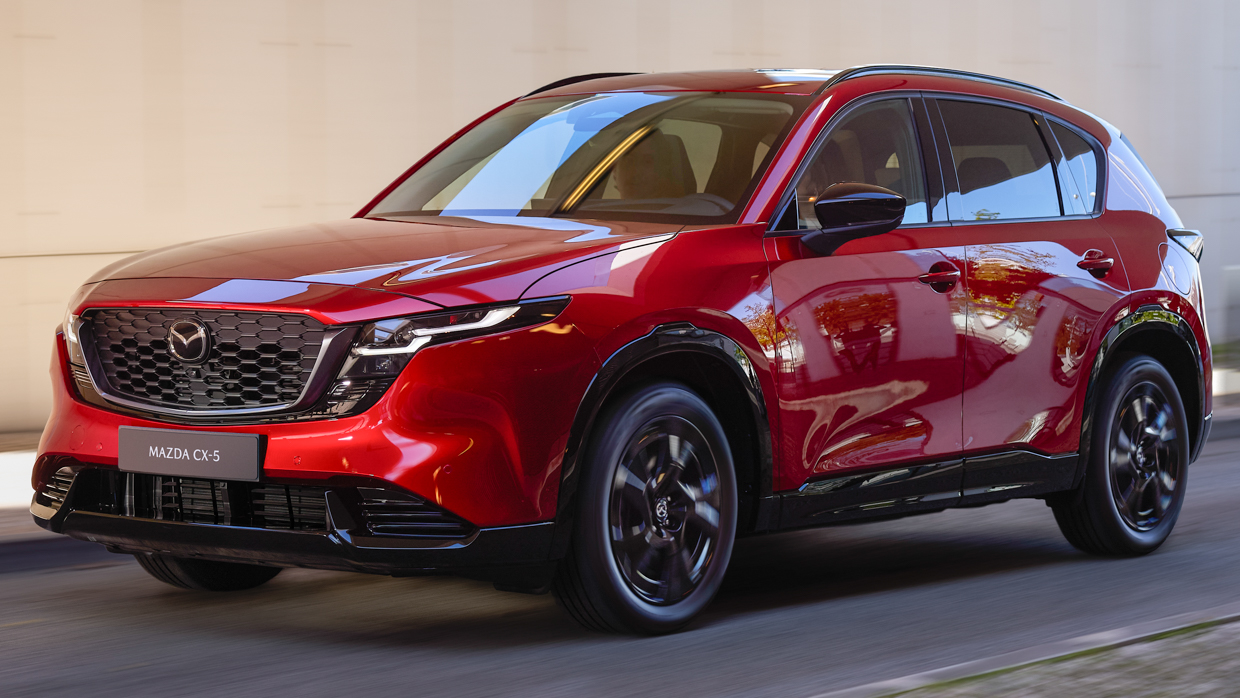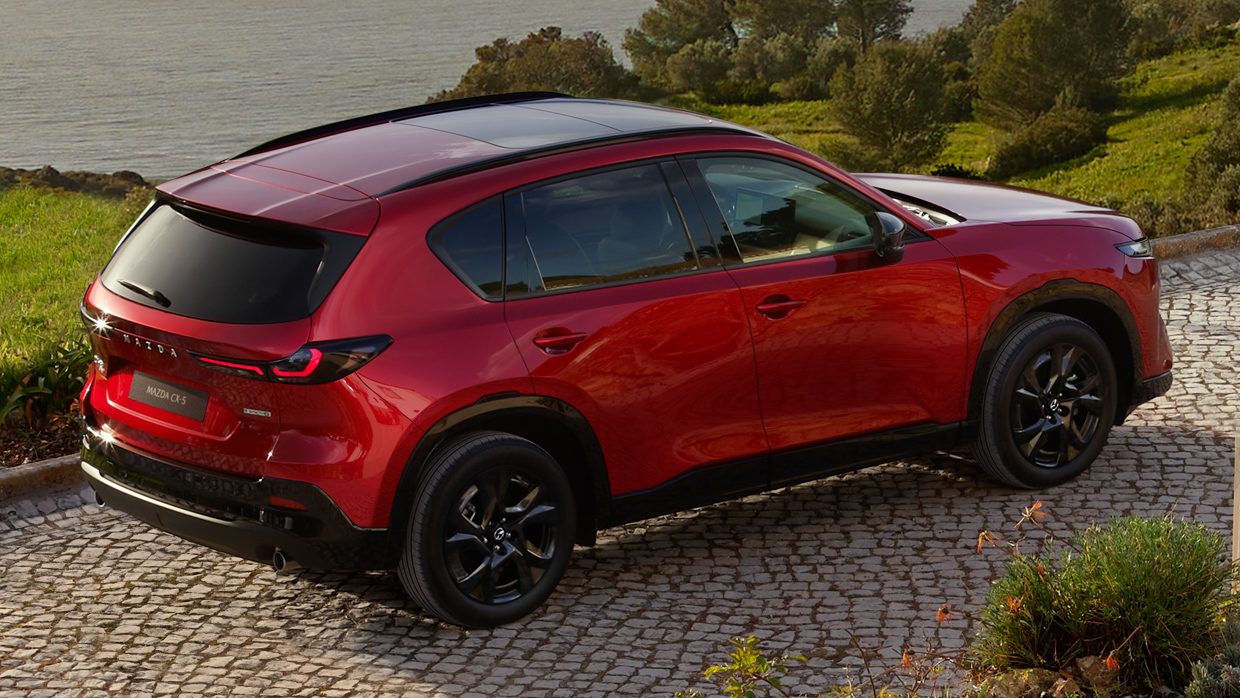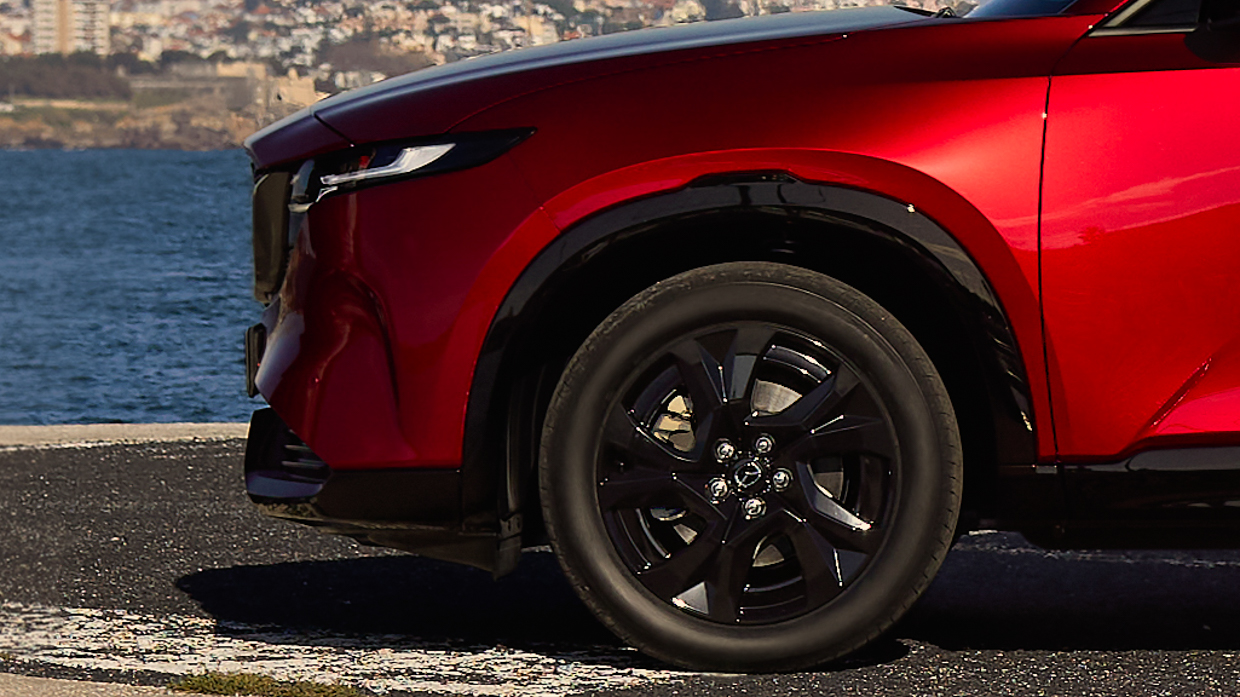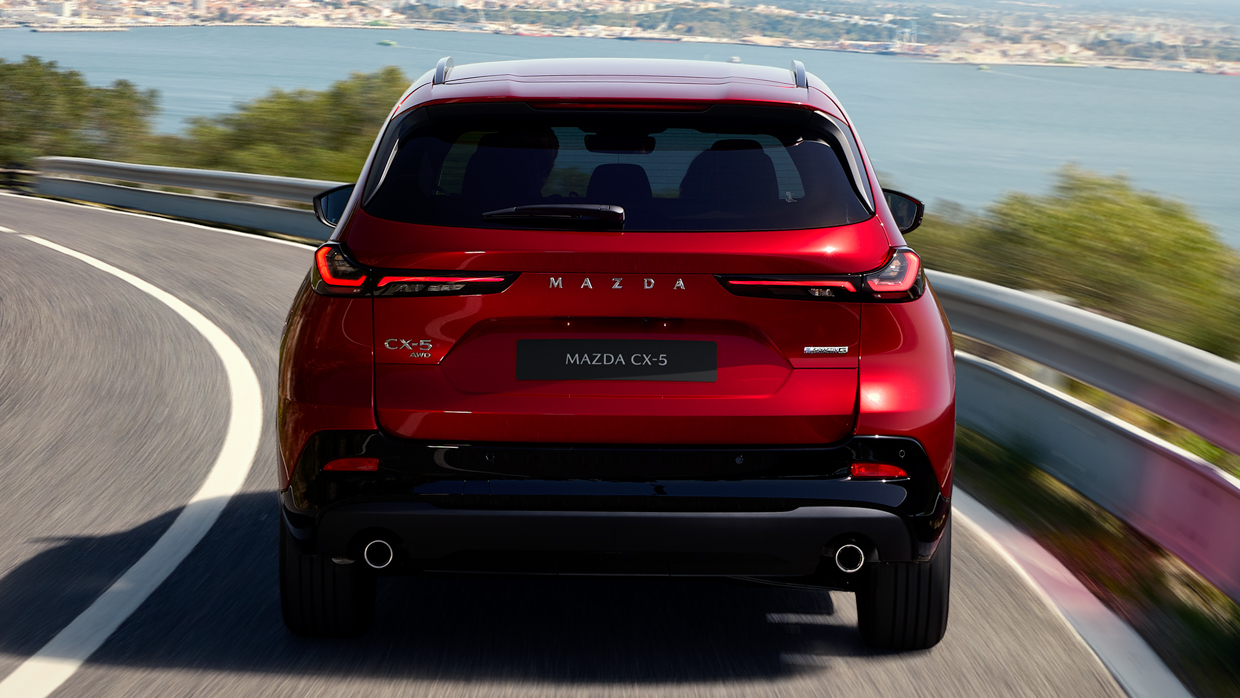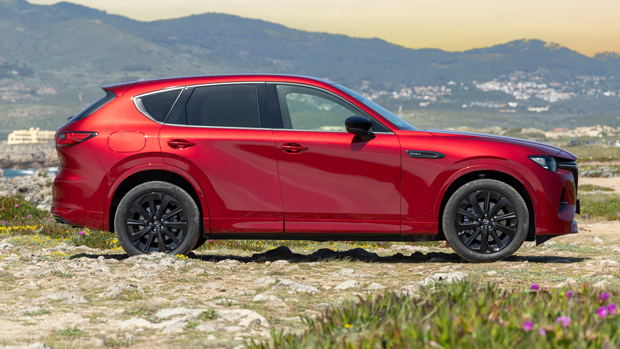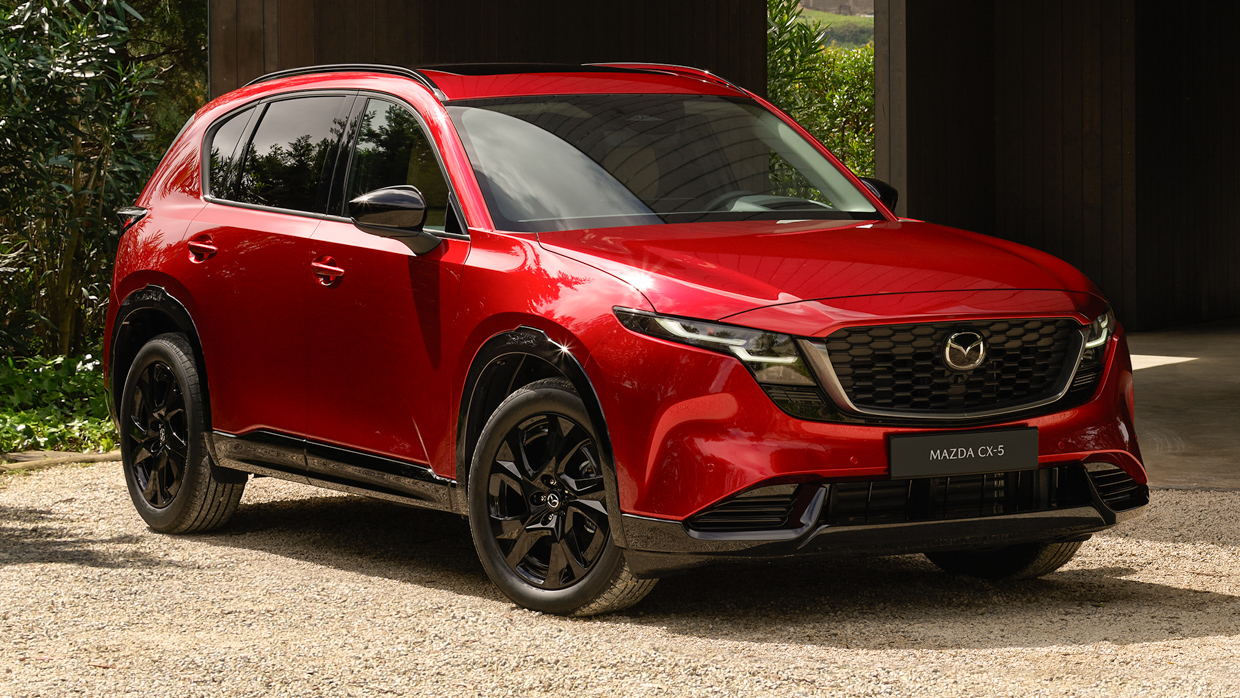-
Car Reviews
- All reviews
- Midsize SUVs
- Small cars
- Utes
- Small SUVs
- Large SUVs
- Large cars
- Sports SUVs
- Sports cars
- Vans
Latest reviews
- Car News
-
Car Comparisons
Latest comparisons
- Chasing Deals
CX-5 hybrid engine option will effectively replace discontinued turbo, combining higher performance with lower CO2 emissions
More details of Mazda’s unfinished hybrid engine option for the third-generation CX-5 are starting to emerge in the wake of the Japanese manufacturers’ reveal of the refreshed midsize SUV earlier this month.
When the next-gen CX-5 is released in Australia in mid-2026 (in about a year from now), it will launch with just one engine: a detuned 132kW/244Nm version of the current CX-5’s non-turbo 2.5-litre petrol four-cylinder, with the optional 170kW/420Nm CX-5 turbo discontinued.
A CX-5 hybrid will arrive in late 2027 or early 2028, with the hotly-anticipated electrified engine set to solve two problems for Mazda: it will bring a more powerful engine back to the range (to replace the 2.5 turbo) while also slashing the CX-5’s CO2 emissions.
More power will undoubtedly satisfy customers, while Mazda will benefit from reducing the CX-5’s emissions under Australia’s tough new NVES laws, which set tight CO2 limits for new car sales and impose financial penalties for car manufacturers that breach them.
We now know more about when the new CX-5 will gain its hotly-anticipated hybrid engine option in Australia, with the CX-5 hybrid set to be a replacement for the discontinued turbo as the ‘performance’ engine option of the range.
Speaking with Chasing Cars, Mazda Australia managing director Vinesh Bhindi confirmed a “mid-2026 or second half of 2026” release date for the CX-5, with the relatively long lead time attributed to the fact the new CX-5 will initially be built in left-hand drive for European markets.
What about the hybrid? There’s still a chance it will squeak into 2027 for Australia—and Mazda Australia is pushing for 2027—though a 2028 release date for the CX-5 hybrid is more likely.
“The US market has informed that 2027 is when [the US] will be launching the hybrid,” Bhindi told Chasing Cars. “[Australia] will be thereabouts … we have requested [a CX-5 hybrid release date that is] earlier rather than later.”
Bhindi revealed that engineering work is still very much in progress for the CX-5 hybrid, which uses a powertrain developed entirely in-house. By comparison, the US-market CX-50 borrows a Toyota hybrid system from the Corolla Cross (and the two share a US factory).
“There is still a lot of engineering work to be done [on CX-5 hybrid],” Bhindi said. “Our engineers are ensuring they fine-tune it … to capture that Zoom-Zoom [feeling]. It will be very Mazda, and it will deliver the things that are important the driver feels in the car.”
The Mazda Australia boss has not personally driven the CX-5 hybrid yet and does not expect to do so in 2026.
Meanwhile, a senior Mazda North America executive told US publication CarBuzz that the CX-5 hybrid essentially replaces the outgoing ‘G35’ turbocharged engine in the lineup.
“The hybrid system will have performance that is comparable to or exceeding the turbo powertrain,” said Stefan Meisterfeld, vice president of strategic planning for Mazda North American Operations.
That should mean that the future CX-5 hybrid is more powerful than the incoming Toyota RAV4 hybrid, which lands in Australia in 2026. The next-gen RAV4’s hybrid system has been detuned to 143kW—barely more than the CX-5’s 132kW non-hybrid petrol.
But while the RAV4 went hybrid-only in mid-2024, Mazda Australia is planning for the hybrid to be an additional option for CX-5 buyers, sitting above the 2.5-litre non-turbo in the lineup from late 2027 or early 2028.
“I am not sure that by 2027, all customers will be ready for hybrid only,” Bhindi told Chasing Cars. “Our thinking would be that if the 2.5 [non-hybrid] is still available, and there is reasonable demand, there should be no reason why we don’t have them side-by side.
“We will wait and see what the demand for [the non-hybrid] is rather than completely eliminating it. If our factory eliminates it, we will have no choice. But our thinking is that it will co-exist,” Bhindi said.
In the meantime, before the CX-5 hybrid finally reaches Australian shores, Mazda expects that some customers will opt for a CX-60 plug-in hybrid instead if it suits their needs.
“I expect Mazda dealers would talk to a customer about a plug-in hybrid version of the CX-60 if they are looking at CX-5, but our thinking is we will always first, as a priority, meet customer demand,” Bhindi said.
NVES limits penalise carmakers for selling too many high-CO2 vehicles get tighter every year. By the time the CX-5 lands in Australia the limit for SUVs would be 68g/km in 2028 or 92g/km in 2027, compared to 117g/km in 2026.
Under NVES, the CO2 emissions of all vehicles sold by a carmaker in a year are averaged. If the average exceeds the NVES target for that year, the carmaker is fined $100 for every gram of CO2 over the limit multiplied by the number of vehicles sold. Carmakers that emit less than their limit receive NVES credits that can be sold or banked.
Chasing Cars predicts that the incoming CX-5 with 2.5-litre non-hybrid engine will produce around 160g/km of CO2, meaning that if sales of it are not offset by sales of full EVs, PHEVs and hybrids, it will become expensive for Mazda to sell the 2.5-litre into the future.
By contrast, all-wheel drive versions of the Toyota RAV4 hybrid presently produce 109g/km of CO2, which is under NVES limits for 2025 and 2026, but even that car is on the wrong side of emissions penalties from 2027.
Latest news
About Chasing cars
Chasing Cars reviews are 100% independent.
Because we are powered by Budget Direct Insurance, we don’t receive advertising or sales revenue from car manufacturers.
We’re truly independent – giving you Australia’s best car reviews.
